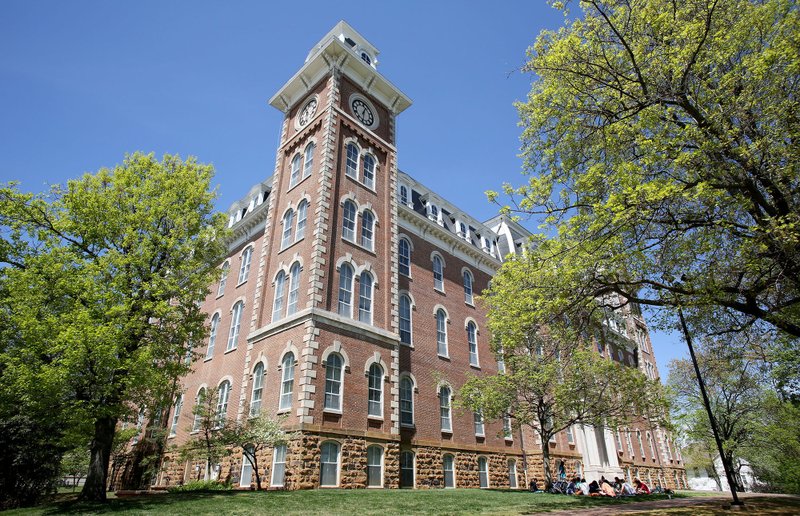University of Arkansas System schools should increase face-to-face instruction when possible during the spring semester during the coronavirus pandemic, trustees decided Friday.
The board's academic and student affairs committee Thursday approved a resolution instructing campuses to prioritize in-person coursework as much as possible. On Friday, the full board approved it without discussion.
The vote took place at the first face-to-face trustees meeting since January, despite the continued spread of covid-19 in Arkansas. The regularly scheduled, two-day meeting was held in Fayetteville ahead of the LSU-Arkansas football game today.
The resolution, while urging more face-to-face courses than were held this semester, stipulates that health-policy directives must be followed while planning for the spring term. Campuses should also keep plans to shift delivery methods as necessary, it states.
Trustees passed the resolution as active and new cases of covid-19, the disease caused by the coronavirus, continue to rise, and the number of available hospital beds shrinks as more patients need critical care.
[CORONAVIRUS: Click here for our complete coverage » arkansasonline.com/coronavirus]
Several colleges in Arkansas, including some in the UA System, have decided to end their fall terms before Thanksgiving or pivot to online-only instruction after the break. Others, including some in the UA System, have not.
Dozens of colleges and universities have suspended in-person instruction in the past months as the virus has spread, according to Inside Higher Ed. About 1,000 institutions started the fall term primarily online, according to Davidson College's College Crisis Initiatives.
Covid-19 cases at Arkansas residential colleges spiked at the beginning of the fall term, prompting institutions to limit certain operations, but classrooms and dormitories have remained open. Active cases at institutions tracked by the Arkansas Democrat-Gazette have been rising in recent weeks, but generally remain much lower than they were in early September.
Health experts and Gov. Asa Hutchinson have expressed concern about even more covid-19 cases and a worsening strain on hospital resources as people, including college students, travel home for Thanksgiving and winter holidays, increasing the risk of disease spread.
On Thursday, UA System officials discussed the resolution briefly. President Donald Bobbitt told trustees the resolution was meant to "signify the intent of the system" while providing chancellors and faculty discretion in course planning.
Bobbitt has said he's worried about the atmosphere on campuses and the morale of students.
On Friday, trustees heard a presentation from University of Arkansas, Fayetteville Student Government Association President Julia Nall, in which she discussed students' continued mixed feelings on online versus face-to-face instruction. Some students believe they do better in face-to-face classes and prefer them, but they're still electing to do their coursework remotely to protect their health.
UA, Fayetteville Chancellor Joseph Steinmetz told trustees that the university is expecting to offer more face-to-face coursework in the spring now that the university "knows what works." The university is advising students that if they select face-to-face instruction they will be expected to continue it for the duration of the term, unless special circumstances dictate otherwise.
Trustees directed campuses to be open for face-to-face instruction during the current semester back in May when state government began to allow phased-in reopenings of certain businesses to foot traffic and halted curfews.
The shift last spring to fully remote instruction, when the coronavirus first arrived in Arkansas, ended up costing residential universities millions of dollars in lost housing and dining revenue.
This fall, universities offered most courses in at least a hybrid face-to-face and virtual format, so students could choose to an extent whether to stay home or go to class. Community colleges, home to many workforce training and other courses with heavy hands-on learning, generally had more face-to-face courses.
As the months have worn on, some universities have reported that many students once attending classes on campus are now increasingly choosing to attend virtually, and the number of people on campus is shrinking.

